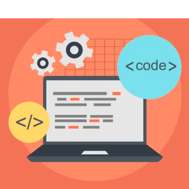| How To Write Code Documentation |
| Written by Gilad David Maayan | |||
| Thursday, 15 June 2023 | |||
|
Mastering the art of writing code documentation is a vital skill for every software developer. This article explores the significance of code documentation in developing maintainable and efficient software and offers valuable tips for creating effective code documentation. Read on to discover what code documentation entails and why it is crucial for both individual developers and teams. We will share valuable insights on crafting code documentation that can streamline processes and improve a project's overall quality. What Is Code Documentation?Code documentation is an integral part of software development and includes written descriptions and explanations for the codebase. It acts as a reference guide to help developers understand, maintain, and enhance the system. Code documentation can be divided into two main categories: internal and external. Internal code documentation, also known as inline or source code comments, is written directly within the code. These comments provide context for specific code sections or explain complex algorithms in plain language. They serve as useful reminders for developers when revisiting their work or collaborating with others on a project. External code documentation is documentation that exists outside of the source code. It is typically more comprehensive and structured compared to inline comments and is designed to provide a high-level overview of a system, including its architecture, interfaces, and functionality. External documentation is often targeted towards a wider audience, including not only developers but also project managers, clients, and end users. Why Is Code Documentation Important?Code documentation is a crucial aspect of software development that often goes overlooked. It provides a foundation for understanding and preserving code, enabling developers to work more efficiently and effectively. Here are some key reasons to prioritize code documentation: Easier OnboardingWell-documented code allows new team members to get up to speed quickly, reducing time spent on training and supervision. Clear explanations of component interactions help new developers understand software architecture, design patterns, and coding practices without having to decipher complex logic. Better CollaborationAccurate documentation ensures that all team members are aware of project goals, requirements, and implementation details. This leads to fewer misunderstandings or miscommunications among team members and promotes code collaboration through shared knowledge. MaintainabilityThorough documentation makes maintaining software significantly easier. Developers can quickly identify issues or areas for improvement by referring to documented explanations instead of spending hours analyzing unfamiliar code. Fewer Errors and BugsAdequate inline comments help prevent errors during development by providing context around specific functions or lines of code. Furthermore, documenting edge cases ensures robust testing procedures are in place, catching bugs early before they become critical issues. Improved Long-term Project ManagementProper documentation serves as a historical record for your project's evolution, making long-term software development efforts easier to manage as projects grow and change. How to Write Code Documentation: 8 Tips and Tricks1. Add Comments to Your CodeStart by adding comments directly within your source files. These comments should explain the logic behind specific code sections or provide context for a particular function. Ensure that your comments are brief yet detailed enough for other developers to understand easily. 2. Add DocstringsDocstrings provide more detailed explanations about functions, classes, or modules than inline comments alone. Include information such as input parameters, return values, exceptions raised (if applicable), and usage examples when writing docstrings. 3. Make it a Collaborative EffortInvolve multiple team members in the documentation process to ensure different perspectives are considered as part of the documentation. Encourage collaboration using tools like Confluence, GitLab Wiki, or shared Google Docs. 4. Conduct Code ReviewsCode reviews offer an excellent opportunity to assess the quality and accuracy of your documentation. Check that all functions, classes, and modules have appropriate comments or docstrings explaining their purpose and usage. Ask questions or suggest improvements during the review process if necessary. 5. Write Test CasesWell-written test cases can serve as documentation by demonstrating how different application parts should work under various conditions. Including test cases in your project's repository provides developers with concrete examples to reference when trying to understand specific system functionality. 6. Leverage Application MappingWhen documenting complex software applications, it’s a good idea to start with application mapping tools that can help you visualize the structure of your application and its dependencies. Tthcumentation, and also include diagrams created by the application mapping tool. 7. Create External Documentation and API DocumentationCode reviews offer an excellent opportunity to assess the quality and accuracy of your documentation. Check that all functions, classes, and modules have appropriate comments or docstrings explaining their purpose and usage. Ask questions or suggest improvements during the review process if necessary. 8. Leverage a Code Documentation ToolMany tools can automate code documentation generation based on comments and docstrings in your source files. This is also called documentation as code. Popular options include Sphinx, JSDoc, TypeDoc, and Swimm. These tools save time and ensure consistency across different parts of your project's documentation. ConclusionIn conclusion, code documentation is a fundamental component of programming that contributes to source code reliability and maintainability. Documenting your code ensures that others can easily understand and modify it without causing issues. Ensure clarity, brevity, and relevance when crafting code documentation. Use tools like comments, README files, and wikis to organize your documentation effectively. Related ArticlesSeven Mistakes Every Newbie Programmer Makes To be informed about new articles on I Programmer, sign up for our weekly newsletter, subscribe to the RSS feed and follow us on Twitter, Facebook or Linkedin.
Comments
or email your comment to: comments@i-programmer.info
|
|||
| Last Updated ( Thursday, 15 June 2023 ) |


